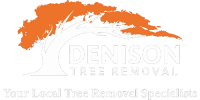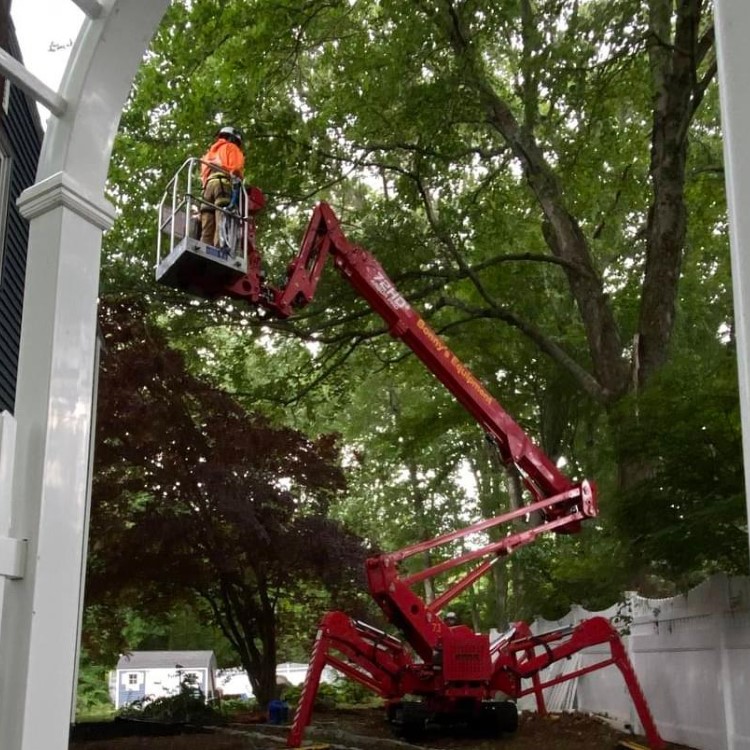Trees are an essential part of any landscape, providing beauty, shade, and environmental benefits. However, maintaining trees properly requires regular care, including tree pruning and tree trimming. While these terms are often used interchangeably, they serve different purposes and impact the health and appearance of your trees in distinct ways. Understanding the differences between tree pruning and tree trimming can help homeowners and property managers in Ledyard, CT, and surrounding areas like Preston, Waterford, Stonington, and East Lyme, ensure their trees thrive year-round.
Key Takeaway:
Tree pruning focuses on tree health and structure, while tree trimming is mainly for aesthetics and growth control. Both practices are essential for maintaining healthy, beautiful trees in residential and commercial landscapes.
The Purpose of Tree Pruning and Tree Trimming
Tree Pruning for Health and Longevity
Tree pruning is a critical tree care practice that involves selectively removing branches to improve the tree’s overall health. It is done to remove diseased, damaged, or dead branches that could hinder the tree’s growth or pose a safety hazard. Regular tree pruning in Preston, CT, and other nearby locations helps trees develop strong, resilient structures, allowing them to withstand harsh weather conditions.
Proper pruning techniques also enhance air circulation within the canopy, reducing the risk of fungal infections and pest infestations. Trees that receive regular pruning live longer and remain more structurally sound, making them an asset to any landscape. Learn more about arboriculture and how it contributes to tree health here.
Tree Trimming for Shape and Aesthetic Appeal
Tree trimming, on the other hand, is mainly performed for aesthetic purposes. It involves cutting back overgrown branches to shape the tree, maintain its appearance, and promote controlled growth. In areas like Waterford, CT, tree trimming services are essential for keeping trees from obstructing power lines, buildings, or sidewalks.
While tree trimming helps trees look well-maintained, it also encourages better sunlight penetration and improves air circulation. This is particularly important for properties where trees are part of a carefully designed landscape. Trimming ensures that trees do not become too dense, which could prevent grass and other plants from getting adequate sunlight.
When to Perform Each Practice
Tree pruning and tree trimming should be done at different times of the year. Pruning is typically performed in late fall or winter when trees are dormant, reducing stress on the tree. Meanwhile, trimming is done during the growing season to control excessive growth. The timing of these practices varies depending on the tree species and local climate conditions in areas like Stonington, CT.
Methods and Techniques Used in Tree Care
Selective Pruning for Healthier Growth
Selective pruning techniques help remove branches that could compromise a tree’s structure or health. This includes thinning out weak limbs, removing crossing branches, and cutting away infected areas. Professional tree pruning in North Stonington, CT, is essential for homeowners looking to maintain strong, healthy trees.
Crown Reduction for Structural Stability
Crown reduction is a technique used to reduce the size of a tree while preserving its natural shape. It is particularly useful for trees growing too close to structures or power lines. This process involves careful branch removal to maintain balance and prevent stress on the tree. Crown reduction differs from tree topping, a harmful practice that can lead to tree decline. Learn more about tree topping and its negative effects here.
Directional Trimming for Controlled Growth
Directional trimming is used to guide a tree’s growth in a specific direction. This method is often used for trees near buildings or roadways in East Lyme, CT, where unregulated growth could lead to potential hazards. Proper trimming helps trees grow in a way that enhances safety and aesthetics without compromising their health.
Why Tree Pruning and Trimming Matter for Your Landscape
Enhancing Tree Health and Preventing Diseases
Regular tree pruning and trimming prevent the spread of diseases and pests that can weaken or kill a tree. Insects such as woodboring beetles can infest trees, causing significant damage. Removing infected or dead branches reduces the risk of infestation and promotes overall tree health. Learn more about woodboring beetles here.
Improving Safety and Reducing Risks
Overgrown or weakened branches can pose safety risks, especially during storms or strong winds. Tree trimming in Preston, CT, ensures that branches do not fall unexpectedly, protecting people and property. Pruning also removes hazardous limbs that could break off and cause injury or damage.
Enhancing Property Value and Curb Appeal
Well-maintained trees add beauty and value to any property. Homeowners who invest in professional tree trimming and pruning services in Waterford, CT, can enjoy an attractive landscape that boosts curb appeal and property value. Trees that are properly cared for enhance the overall aesthetic of a home or business.
Answering Common Questions
How often should I prune or trim my trees? The frequency of pruning or trimming depends on the tree species and its location. In general, pruning should be done every 3-5 years, while trimming may be needed annually or biannually.
Can I prune or trim my trees myself? While minor trimming can be done by homeowners, professional tree services are recommended for larger trees or those near power lines. Certified arborists have the expertise to ensure proper pruning techniques are used for optimal tree health.
What happens if I don’t prune my trees? Without regular pruning, trees can become overgrown, weak, and susceptible to disease. Unpruned trees may develop structural problems, leading to broken limbs or tree failure.
The Role of Soil Health in Tree Care
Healthy trees depend on good soil conditions. Soil testing helps determine nutrient levels and whether soil amendments are needed for tree growth. Learn more about soil testing here.
The Connection Between Tree Care and Pest Management
Pest control is a crucial aspect of tree maintenance. Proper pruning and trimming practices reduce pest infestations by removing weak or dying branches that attract insects. Learn about pest control strategies here.
When to Call a Professional Tree Service
If you need expert tree trimming or pruning services in Ledyard, CT, and surrounding areas, contact Denison Tree Removal. Our team of certified arborists provides professional tree care, ensuring the safety and beauty of your landscape.

